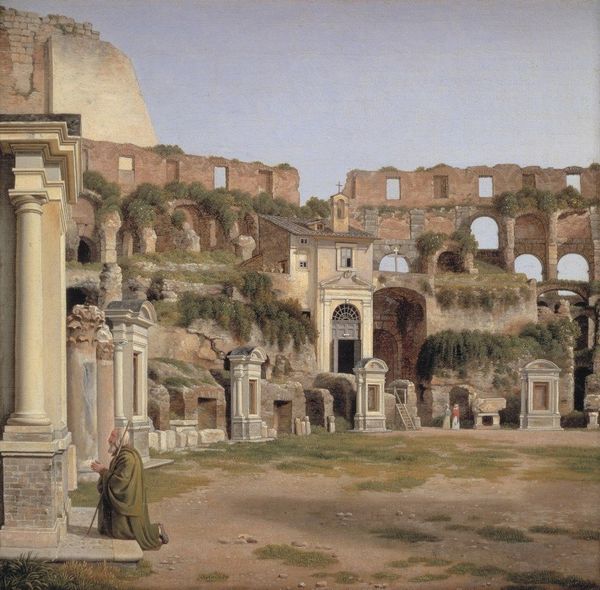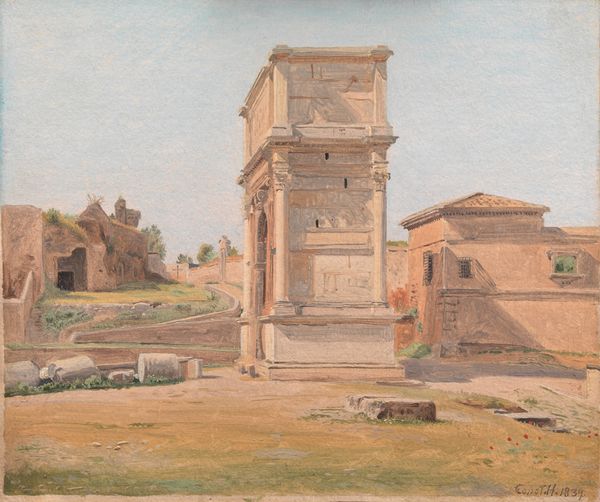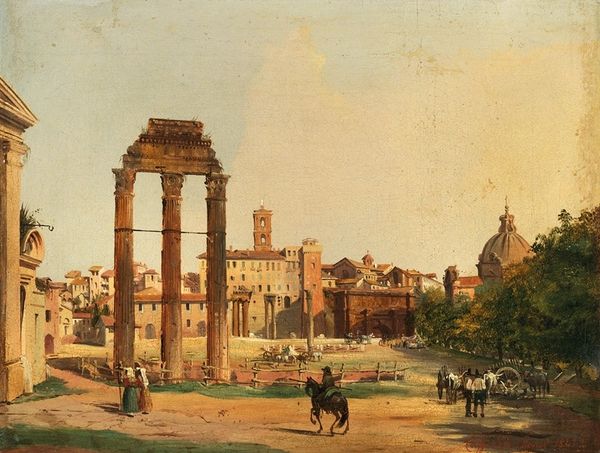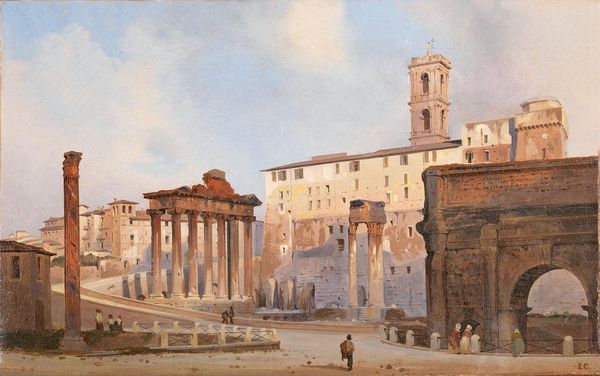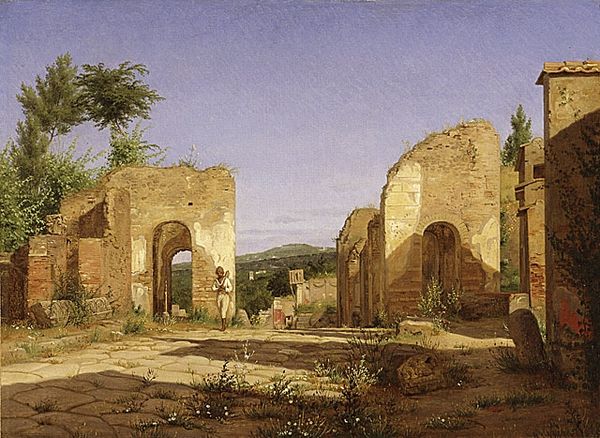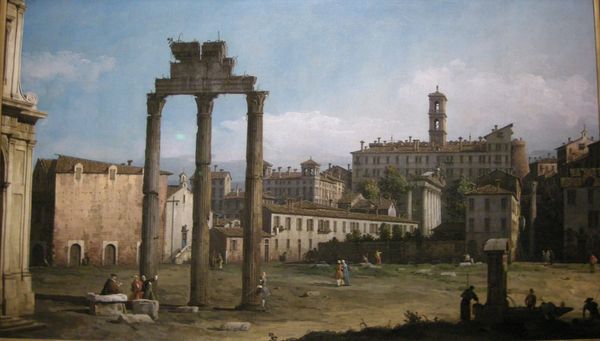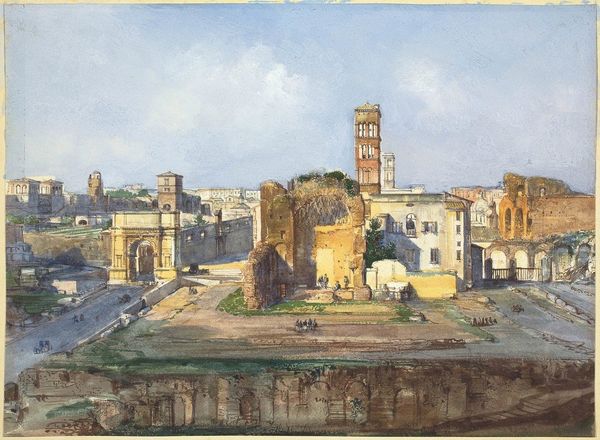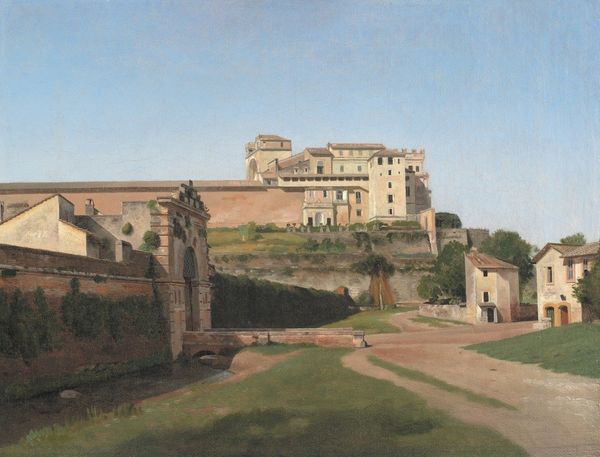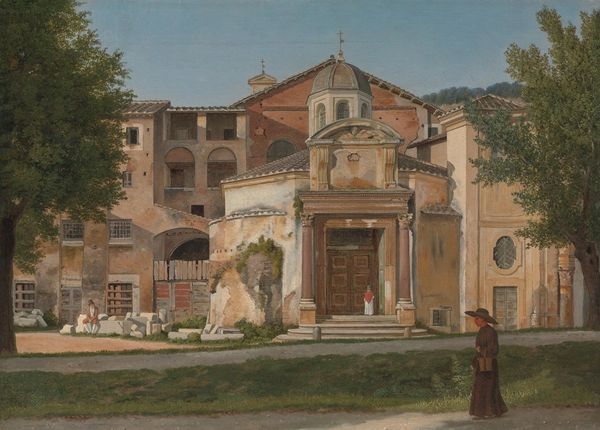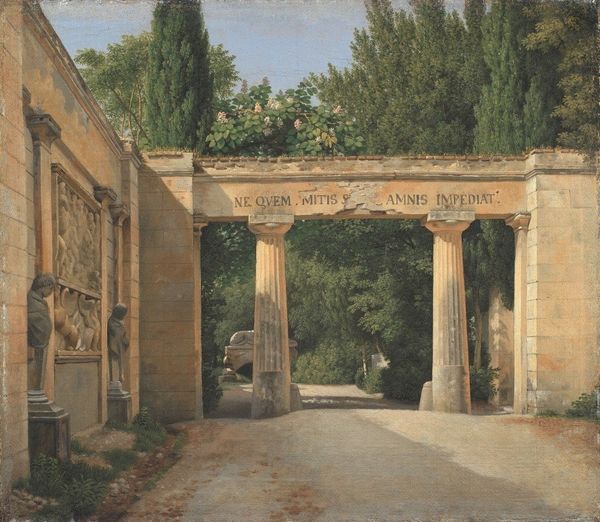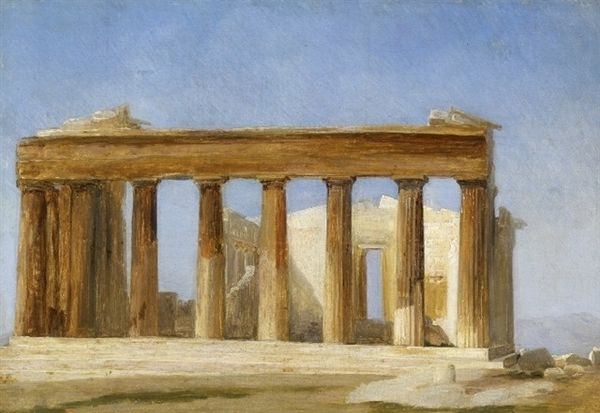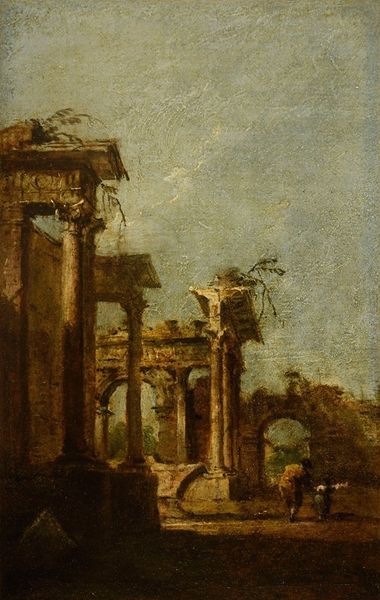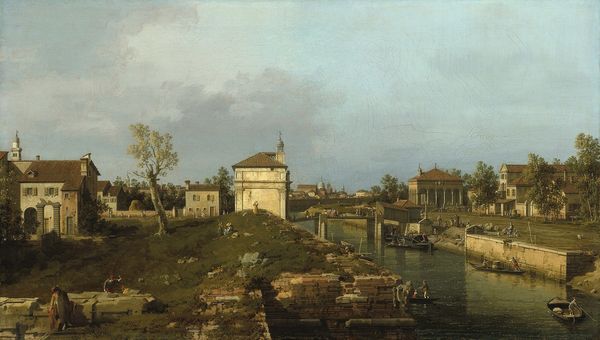
painting, oil-paint, architecture
#
neoclacissism
#
painting
#
oil-paint
#
landscape
#
classical-realism
#
oil painting
#
column
#
romanticism
#
cityscape
#
history-painting
#
architecture
Dimensions: 27 x 31 cm
Copyright: Public domain
Curator: Christoffer Wilhelm Eckersberg, a Danish painter, completed "Part of the Via Sacra" in 1814. Painted using oils, it is a superb example of classical realism. Editor: The first thing that strikes me is the sense of faded grandeur. The sunlight almost bleaches the ruins, giving them an aura of dignified melancholy. Curator: Absolutely, it evokes a powerful emotional response, tapping into a sense of the passage of time. The columns, rendered with meticulous detail, become symbols of resilience, bearing witness to centuries of history and cultural shifts. We are confronted with our mortality as observers. Editor: The way Eckersberg depicts the Via Sacra – a path literally built for triumphs and sacred processions – really hits at something deeper. Think about it: the power structures, the inequalities inherent in the Roman Empire… And now all that's left is this shell, these crumbling remains open to anyone. Curator: The architecture depicted operates as both a ruin and a recognizable symbol of the era. Neoclassicism drew heavily on these classical architectural styles and principles. It represented order and reason for a revolutionary and chaotic era in European history. These classical columns were the ideal. Editor: But order imposed. This wasn't just about aesthetics, right? Those columns upheld an empire built on slavery and oppression. Is this work nostalgic or an early indication of a crumbling European supremacy that the artist would have witnessed in his lifetime? Curator: Well, within the Romantic movement's lens, it definitely encapsulates the movement's engagement with ruins as powerful symbols of human impermanence. Perhaps, it acts as a commentary of any rigid structure of power; even architecture must eventually bend to nature’s whim. Editor: And maybe the image reminds us to remember the full stories etched into those stones, not just the pretty, idealized versions that power wants us to see. History belongs to everyone who makes it—even those forced into silence at the bottom. Curator: I appreciate how you brought these reflections to this work. Seeing it in this light enriches my view, too, reminding me to seek a full narrative of the artwork. Editor: Precisely. Even within fragments and ruins, meaning persists. Perhaps what they symbolize even deepens with the passage of time and reflection.
Comments
No comments
Be the first to comment and join the conversation on the ultimate creative platform.
